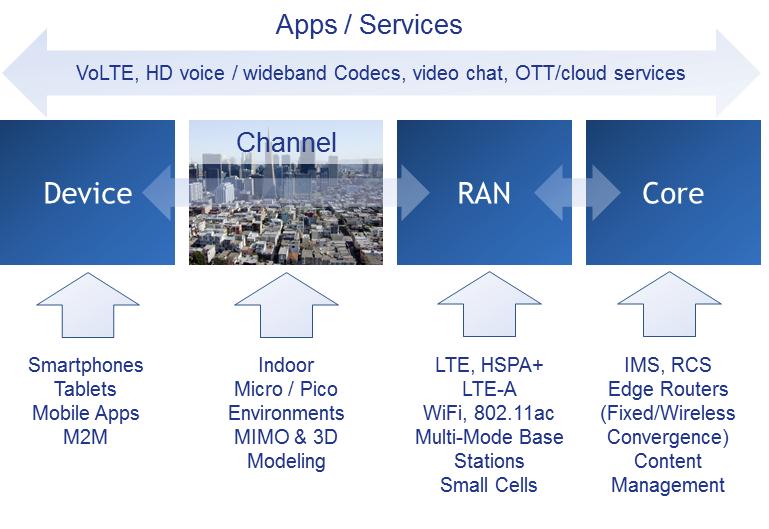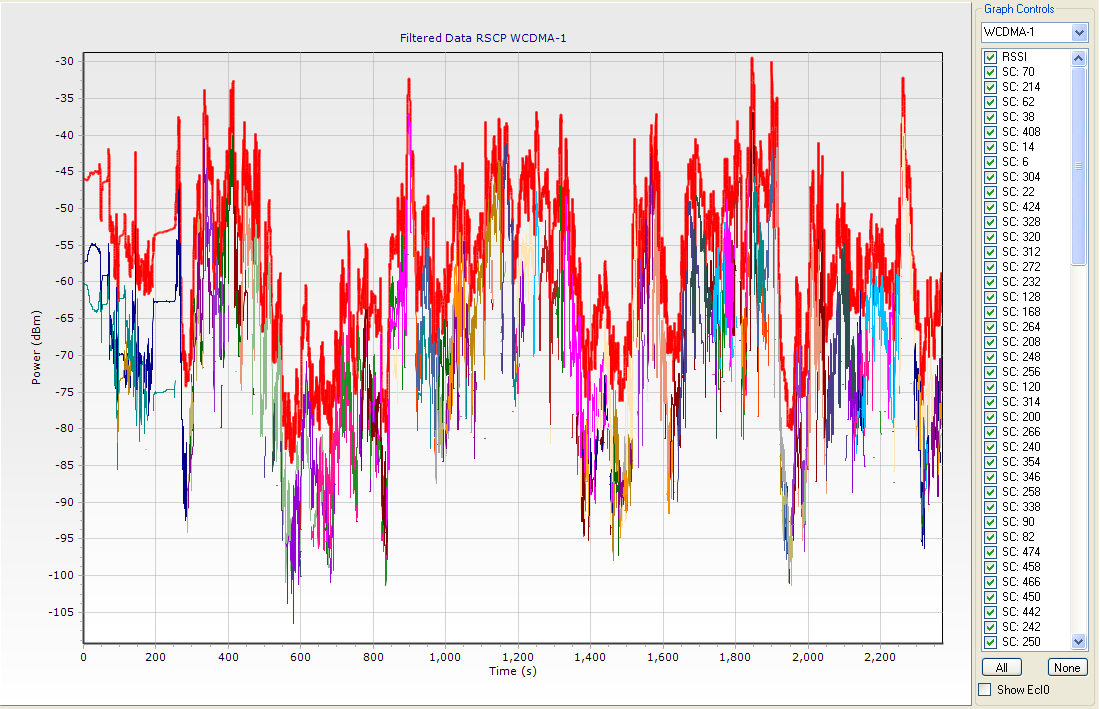Bringing the real world into the lab
David Hill, VP EMEA, Spirent, explains how new approaches to end-to-end testing for wireless communications can save time and money by modelling realistic test conditions even in the development stages.
Wireless technology is, by default, complicated and every several years, a surge of new technologies presents a dramatic increase in complexity. Today, major innovations in the mobile device, Radio Access Network (RAN), core network and services are all hitting at once, driving wireless technology to unprecedented levels of complexity and presenting significant challenges in delivering the expected Quality of Service (QoS) to every mobile subscriber.
Wireless communication has never been a simple matter, but every few years a number of technical innovations come together and the level of complexity takes a quantum leap. This is happening right now. Mobile devices come in an awesome range of variations based on a range of chipsets, radios, displays, batteries and operating systems. As well as these innovations in the device, new developments in the RAN, core network and service layer all impact wireless technology and raise it to unprecedented levels of complexity (Figure 1).

Figure 1 - A wave of innovations in wireless technology is leading to unprecedented complexity.
With increased complexity comes the risk that the test procedures of the past no longer identify issues between todays more complex interactions and new technology deployments. This means that testing and quality validation efforts need to be more flexible and faster to ensure the issues are identified before services and equipment go live. Without faster and more precise testing, it is impossible to be sure that new technology, devices and infrastructure will deliver services that meet end-user expectations in the live network.
This pressure to improve testing and validation has driven leading industry players to rethink the whole process of bringing new services, devices and infrastructure to market. One key priority is to isolate problems as early as possible. As we proceed further down the development path, more work is entailed in correcting design errors, and as the process moves from a controlled lab environment to a dynamic live network, even more time and resources are needed to isolate and correct problems. When testing and validation move from the lab to the live network, cost and delays caused by emerging problems rise dramatically. Identifying problems earlier will save much time and money.
New levels of testing realism
The latest test solutions, designed specifically to address these new demands, enable the live network to be modelled with unprecedented realism and accuracy in a controlled lab environment. By accurately and realistically emulating real-world conditions in the lab, many problems that only appear in live network testing can be successfully identified and resolved during lab tests; slashing the resources and time needed to get new devices, services and infrastructure launched.
These solutions increasingly use live network measurements of various sources from protocol captures to RF signal data to drive sophisticated emulation engines. The current generation solutions use actual live network drive tests to enable their channel emulation engines to accurately model the dynamic RF conditions of multi-cell live networks.
In a live network, RF transmissions are incredibly dynamic, consisting of fast and slow fading signals from hundreds of cells. In addition to all those RF signals, there is noise and extra-system interference. Furthermore, both HSPA and LTE rely on MIMO antenna transmission to improve system performance.
Modelling live wireless environments like these in the lab raises several key challenges. First, the cost and complexity of base stations limits the number of cells which can be used for lab tests; typically from one to four cells will be available for lab tests compared with 10-100 cells along a test route in the live network. So the signal variations measured across a large number of cells in the live network need to be mapped onto a much smaller number of lab-based cells, while still capturing the essential variability of the desired and interfering signals.
A second key challenge is to accurately model MIMO configurations in the lab, which may not yet exist in the live-network. For example, an LTE live network may only have 2x2 MIMO deployed, whereas lab tests may require testing for 4x4 or other future MIMO configurations. Furthermore, drive test measurement equipment may not capture all aspects of the wireless channel with sufficient resolution to enable an accurate channel model to be developed. To solve these challenges, lab-based channel models must begin with as much data as possible from live network drive tests and then model the additional channel aspects that aren’t available in the drive test.
Thirdly, the channel models developed from the drive test data must be converted into an import format that a channel emulator can use to create a real-time wireless channel that mimics live network conditions. This import format must take into account the specifics of the experimental configuration, including the number of RF antennas used by the base station and mobile device, the bi-directional or unidirectional nature of the test and other factors.
A radical approach is needed to address all of these challenges. Spirent’s solution is based on a Virtual Drive Test Conversion Tool (VDT-CT) that converts live network drive test data from multiple commercial field capture tools into channel models which may be imported into our channel emulators.
VDT-CT addresses the challenge of modelling live wireless environments in the lab in three main stages: Filtering live network drive tests; Mapping live network data to lab-based cells; and, Generating a channel emulator configuration file. Each of these is based on algorithms that are technology independent, applying equally to CDMA, UMTS & LTE technology families.
The main purpose of the filtering algorithm is to remove fast-fading effects from the live network drive test data. This leaves a processed set of signals from each base station which includes only slow fading effects, i.e. signal variations due to shadowing of buildings or other obstructions between the base station and the mobile device.
Using only these slow fading effects from the drive test allows the channel emulator to apply any supported MIMO configuration on top of the data. The channel emulator uses the slow-fading signal as a baseline for all MIMO transmission paths, then adds fast-fading and Doppler effects with a user-defined level of signal correlation on top of the slow-fading signal.
Fast-fading effects are filtered using the well-known and widely used wavelength-based averaging approach. Signals are averaged over a 40ƛ distance (at 2GHz, 40ƛ=6m). VDT-CT also incorporates several algorithms for mapping signals from live network cells to lab-based cells; each has unique characteristics suited to specific testing needs. More information on the specifics of each algorithm can be obtained from the Spirent VDT-CT user manual. Figure 2 is a sample of the Preservation (Normal) algorithm in action, showing a typical UMTS live network drive test, during which more than 76 cells were observed.

Figure 2 - RSCP data from a drive test of a live UMTS network. 76 cells were observed during the test.
The last step in the live network modelling process is to take the processed drive test data and convert it into a form that the channel emulator can use. In order to do this, VDT-CT needs to know key aspects of the lab-based test configuration such as: Technology (e.g. LTE FDD, LTE TDD); Band, and; Fader connection type (Uplink and downlink, RF channel mapping, MIMO channel mapping and order (e.g. 2x2), Bi-directional or unidirectional). Using this information, VDT-CT creates a live network channel model file that can be imported into the channel emulator and used to emulate the live network environment in the lab.
Building in realism
It is a clear advantage to be able to emulate real world test conditions in the laboratory throughout the design process, and it is equally important to deliver these tests in a simple, repeatable and easy-to-use manner.
Spirent does this by providing automation solutions for end-to-end QoE measurements using a mix of real off-the-shelf devices and, optionally, real base station or core network infrastructure if needed. This automated virtual drive test can cover device testing, RAN validation and pre-launch testing of new services. We also offer a specific mobile device test solution for automating carrier acceptance tests for mobile devices.
The ultimate test of any wireless network must lie in the hands of the user, but we are faced with such a range of devices and performance across use cases and applications that the challenge of ensuring an all-around enjoyable mobile experience is growing. Launching wireless services that delight users demands the development and execution of comprehensive and robust test scenarios well in advance of their launch. By the time they launch, the cost of correcting mistakes may be prohibitive both in terms of fault rectification and damage to reputation.
The solution is to emulate as much of that final test as simply and realistically as possible early in the development process. The latest generation of test solutions not only achieve this in the laboratory with new levels of precision, they also deliver these highly sophisticated tests in a format that is easy to use, automated and highly flexible to allow nimble test adaptation to fast-moving changes in technology and network deployment.


